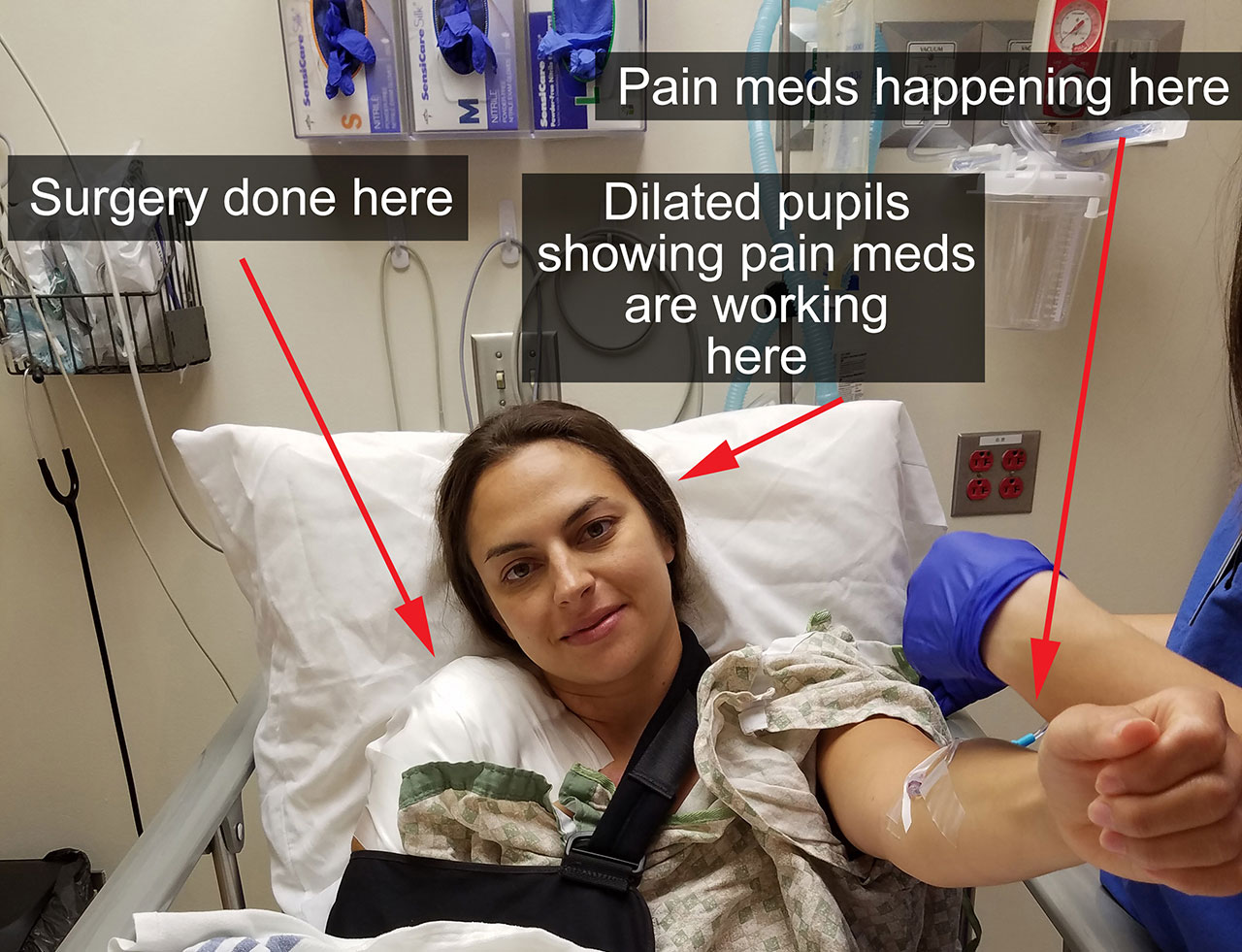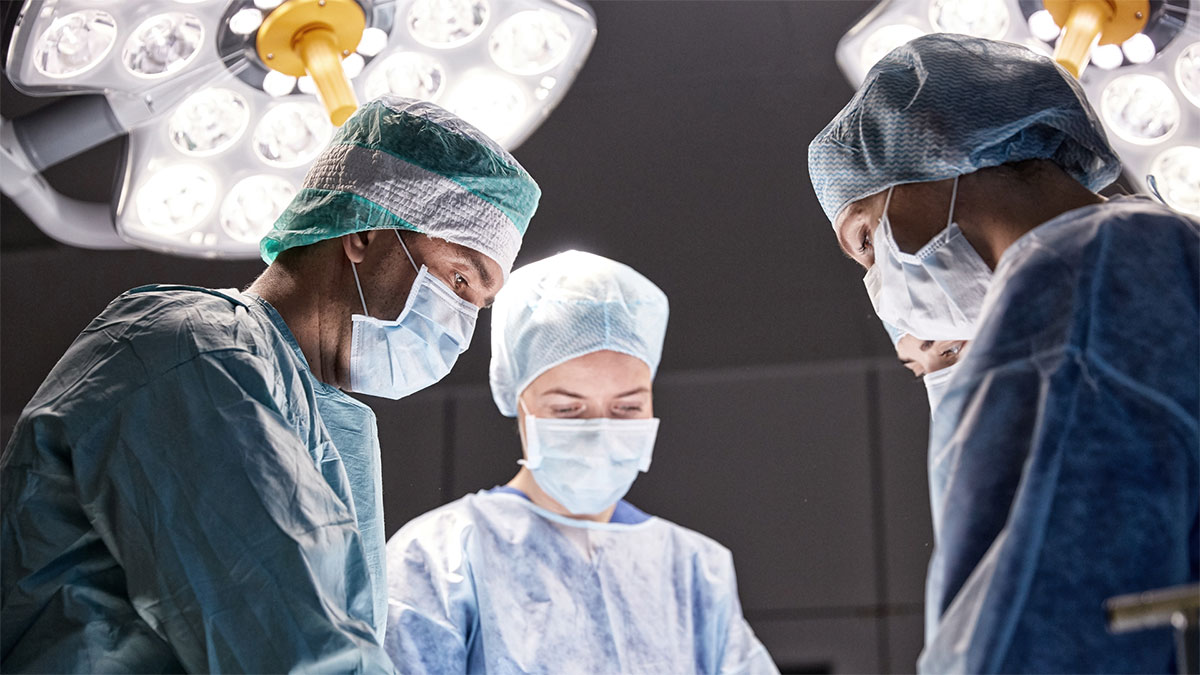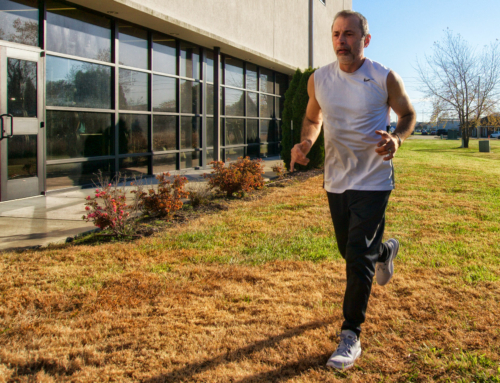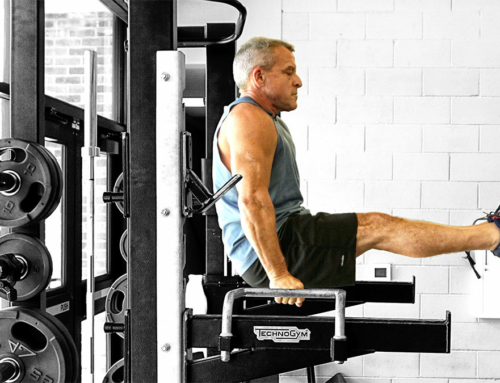Previously on “Sunni’s Shoulder Surgery and Recovery”, a title which isn’t as alliterative as we would have liked, but it will do … an old high school injury had finally caught up with Sunni and required surgery.
“I was having a lot of popping and grinding and pain. It caused me to overcompensate any time there was use of my shoulder which resulted in the whole upper right quadrant of my back to hurt. I had a lot of stiffness in my neck and upper back which limited my ability to do my job and it also reached a point where I was unable to participate in my children’s athletic training and play time, something extremely important to me, without quite a bit of pain. Also, one of my hobbies is lifting weight and it had reached a point were it became unsafe to do because there was a lack of stability. With just about everything I love to do being effected it was time to address this issue.”
As a result Sunni visited her orthopedic surgeon who, after thorough examination, informed Sunni of her options. She could A) leave it be and just accept less involvement in activities that cause pain. B) try an injection to ease the pain, or C) surgically fix it. Since the first two only address the symptoms and choice “C” offers a remedy of the cause, Sunni chose “C”.
So what exactly was Sunni’s injury and what kind of surgery did she require? Well, I’m not a doctor but I have played one on TV a couple of times so I reckon that qualifies me to write a quick synopsis:
Sunni had a surgical procedure called Biceps Tenodesis. This procedure is often performed to treat biceps tendonitis of the shoulder (which is an inflammation of the upper biceps tendon), biceps tendon tears (biceps tendons attach the biceps muscle to the bone in the shoulder and a biceps tendon tear can be either partial – where the tendon is not completely severed, or complete – where the tendon is torn into two pieces, and yes, it’s as painful as it sounds), or instability associated with a rotator cuff tear. Sunni’s issue was a slap tear.
The Surgery
This Reader’s Digest type of condensed version simplifies it greatly but it goes something like this.
A small incision is made in the back of the shoulder and an arthroscope inserted because it’s always nice to see what one is operating on. From the front a needle is inserted through the biceps tendon. A suture is passed through the needle to prevent the tendon from slipping down the arm after it is cut – because that would be bad (not to mention embarrassing for the doctor). By the way, did we just say the tendon will be cut? Why yes, yes we did, and that’s exactly what happens next. Still with us on this? You haven’t passed out yet, have you? Good.
Next up, some cutting, because that’s why they call it surgery. A small incision is made in front of the shoulder to expose the biceps tendon wherein it’s pulled out of the incision. This leaves you with this tendon hanging out and you have to do something with it. And what would that be? Well, you drill a hole known as a “deep bone tunnel” in the humerus, insert the tendon that was just cut and secure it in place with what’s known as a special interface screw. The relocated tendon allows it to operate as before, it’s just attached in a new location.
Sounds easy, right? It isn’t, and we don’t recommend you try it yourself, even if you do have a medical degree from some Caribbean Island Medical School you never really attended. In fact especially if you have a medical degree from some Caribbean Island Medical School you never really attended.
The Recovery
In next week’s post we follow Sunni’s recovery as she starts her physical therapy, which just happens to be at our very own physical therapy division here at Pinamonti Wellness. Not only is that convenient, it offers us the opportunity to promote the heck out of the process.
Prior to surgery Sunni was a tad apprehensive:

“The nurses and my doctor were very reassuring but it made no difference in my mind! Drilling into the bone is still drilling into the bone – no matter how you sugar-coat it.”
However, after surgery, and as Dupont referred to it, “Better living through chemistry” meant pretty much nothing bothered her at all.
Image at top: Re-enactment of surgery using prop lights, actors, and models because there’s no way I’m actually going to take pictures during a real surgery with real blood. I’d faint.







